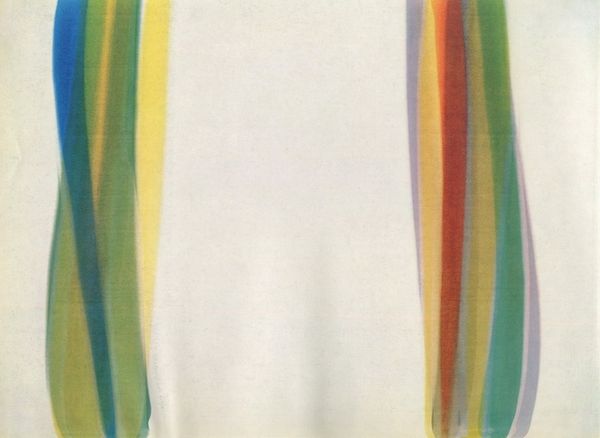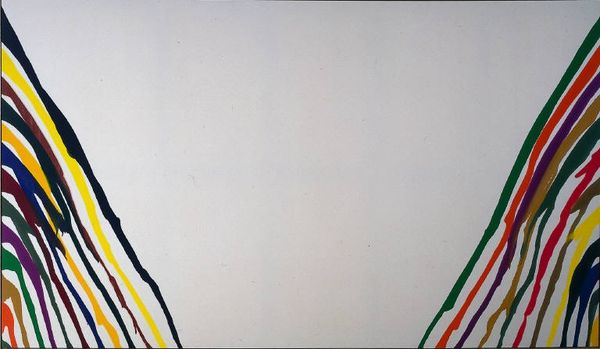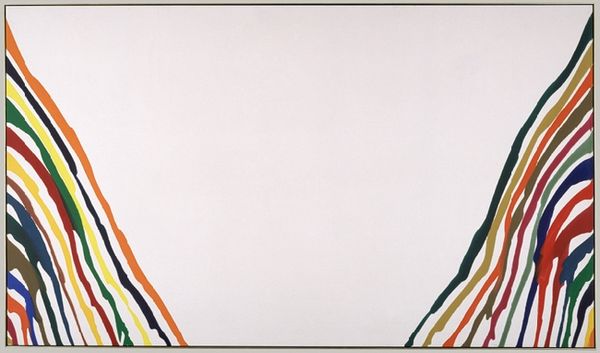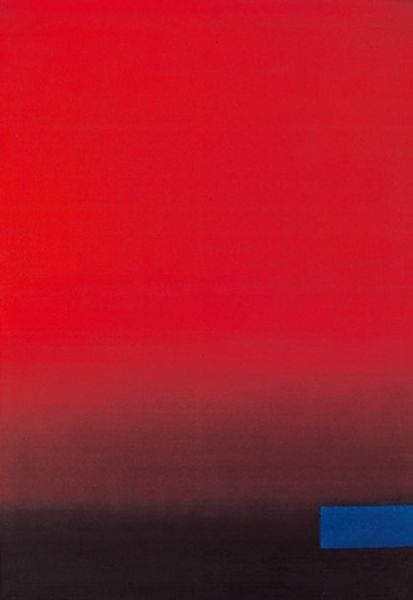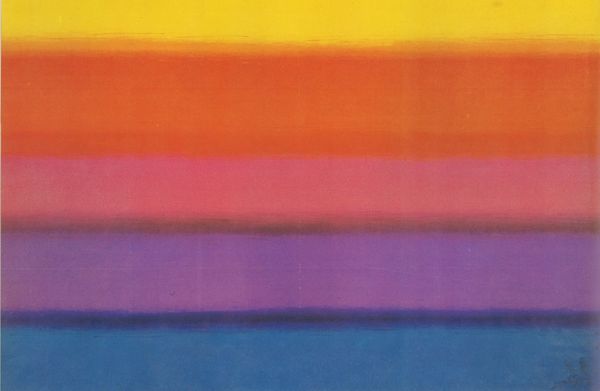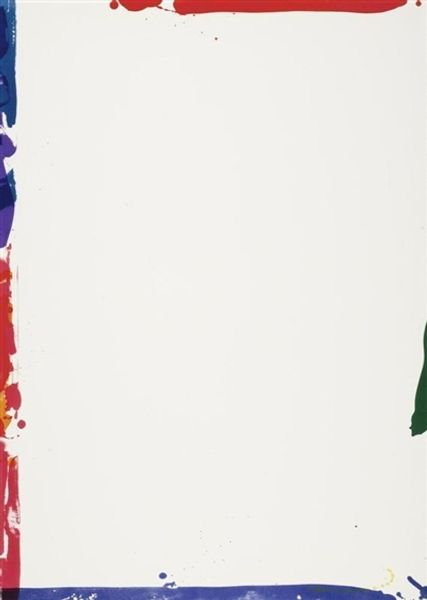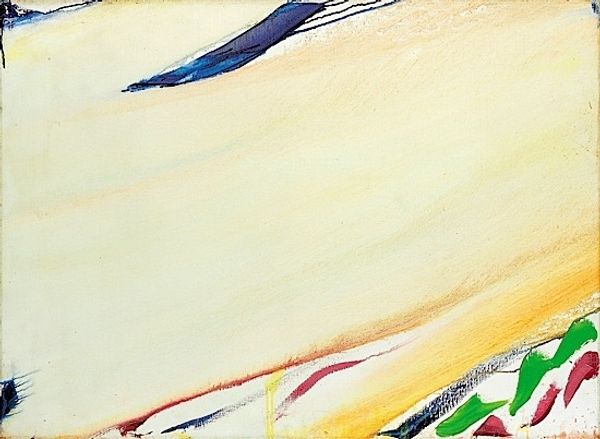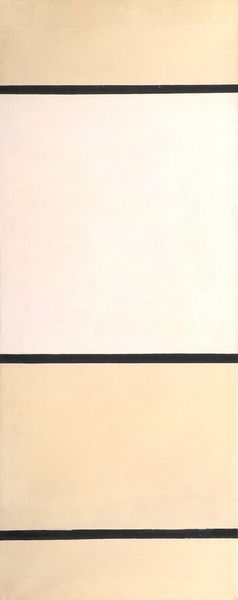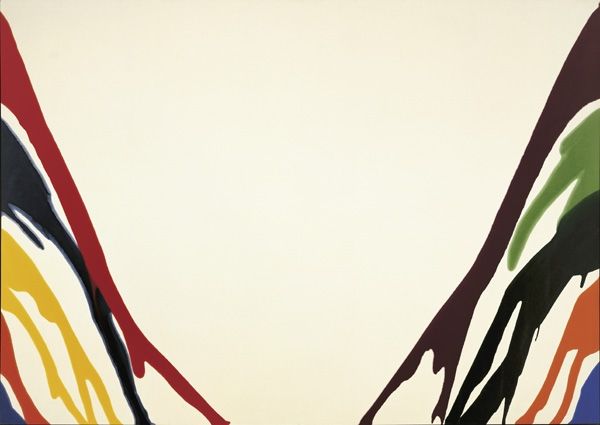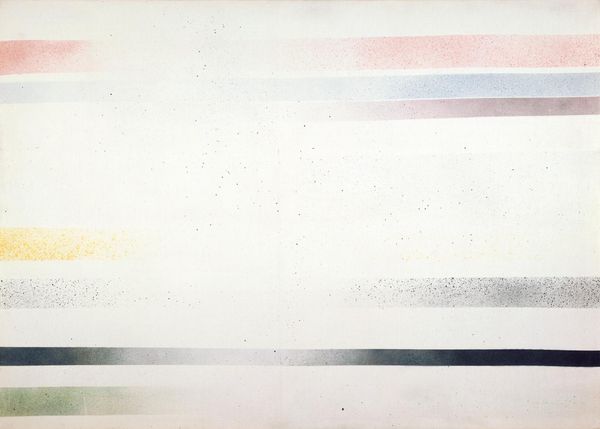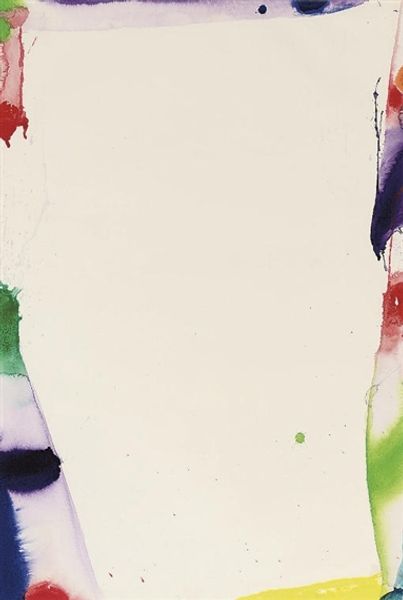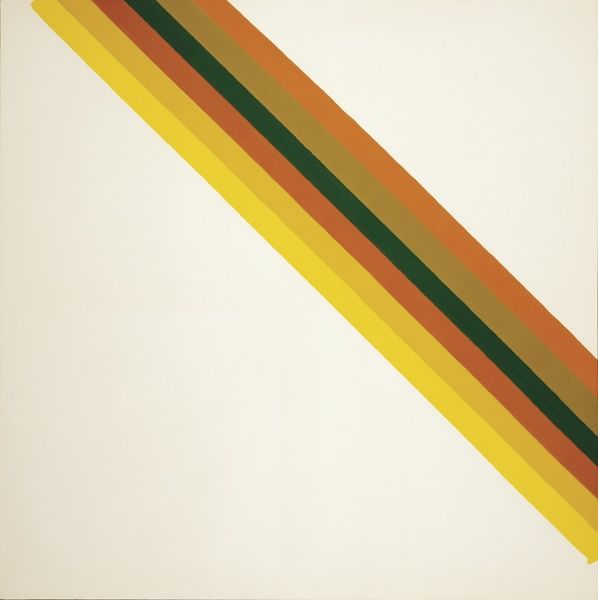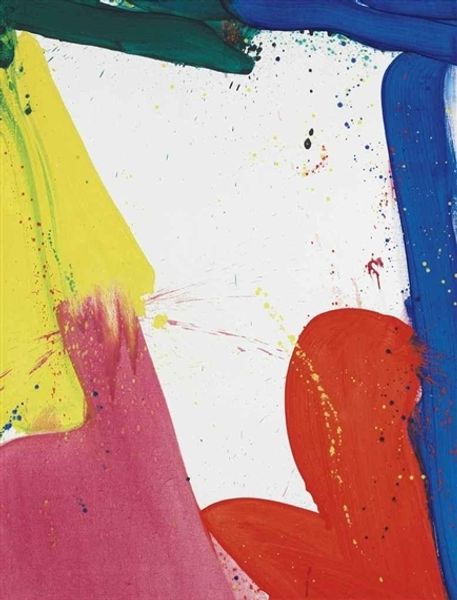
painting, acrylic-paint
#
abstract-expressionism
#
washington-colour-school
#
abstract painting
#
painting
#
colour-field-painting
#
acrylic-paint
#
acrylic on canvas
#
abstraction
#
line
#
modernism
Dimensions: 264 x 438 cm
Copyright: Morris Louis,Fair Use
Curator: This is “K S I,” an acrylic on canvas painting by Morris Louis from 1959. It’s currently held at the Folkwang Museum in Essen. What are your initial thoughts? Editor: Well, it's undeniably striking. The stark whiteness, contrasted by those vibrant, cascading ribbons of color, it's as if rainbows are weeping onto the canvas. There's a somber quality mixed with undeniable energy. Curator: I appreciate your reading of that emotional tension. Formally, the "Unfurleds," as Louis termed this subset of his Color Field works, depend heavily on the sheer optical impact of color. The raw canvas isn't just a background; it’s an active element, structured around a kind of controlled pour. Editor: Controlled, perhaps, but the drips themselves evoke a sense of the uncontrolled, almost a letting go. The 'weeping rainbow' effect carries connotations of mourning, or perhaps a letting go of something cherished. There is a vulnerability, as if what has been meticulously crafted threatens to come undone. Curator: That friction is critical. Think of Louis’s engagement with Clement Greenberg's theories—pushing flatness, celebrating the unique qualities of paint on canvas. The canvas is stained, not painted in the traditional sense. This allows the colors to merge with the weave of the fabric. Editor: It creates a spectral quality. This stain technique, to me, is less about celebrating flatness and more about transcending the physical limitations of the canvas itself. It's almost spiritual; a yearning for something beyond the material. The convergence and near touching of the colours gives this abstract work an unexpected feeling of closure. Curator: Precisely. Though the imagery is purely non-representational, the interaction of these formal elements is still designed to stir emotion. There is a clear awareness of compositional balance in play, the symmetry achieved by opposing the streams, as well as the visual 'weight' or dominance asserted on both edges of the art work. Editor: And the choice to leave the center largely untouched pulls the eye in. You are initially drawn to the boundaries then are pushed inward towards that almost holy central light, suggesting transformation through chromatic catharsis. It’s more than just the visual qualities; it evokes a real sense of catharsis. Curator: An insightful reading, particularly in the way that you synthesise these formal and interpretive threads. I think you've shone light on the intrinsic emotional content embedded in Louis' technique. Editor: And you’ve clarified the revolutionary artistic ambition and structural strategy at the core of this work.
Comments
No comments
Be the first to comment and join the conversation on the ultimate creative platform.
